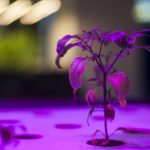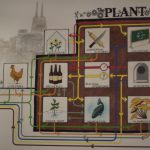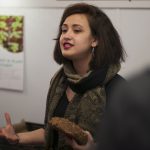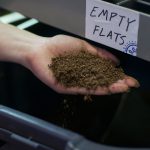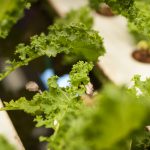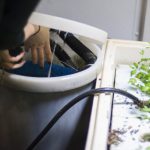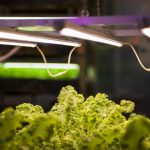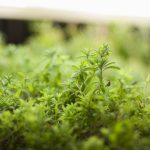
By Kira Fahmy, Luodan Rojas and Alex Schwartz. Photos by Alex Schwartz.
The room is a wide open space; the brick walls are mostly bare except for several clusters of pictures and informational placards. This could be any refurbished industrial warehouse, but for the telltale metal rails that run along the ceiling. They are a reminder of the building’s history as a meatpacking warehouse in Chicago’s Back of the Yards neighborhood, where animal carcasses slaughtered at the Union Stockyards would be hung before processing.
Welcome to The Plant, where present operations symbolize a full reversal from the past. Refurbished by development enterprise Bubbly Dynamics and facilitated by nonprofit Plant Chicago, The Plant is an experiment in circular economies.
Stef Funk, education associate at Plant Chicago, explains the concept: “Instead of wasting something, we’re redefining what it means, or what waste itself means. In this building, all of the tenants cooperate so that the waste from one business is reimagined into another product.”
Plant Chicago also works in many ways to benefit their Back of the Yards community on the South Side. All of the organization’s educational programming is offered for free to anyone with a 60609 zip code. The educational program topics include aquaponic gardens that rely on fish to produce nutrient-rich water, circular economies, native pollinators, composting, and water chemistry.
Plant Chicago, along with other businesses affiliated with The Plant, collaborate with the both the Back of the Yards Neighborhood council and the Peace and Education Coalition. The Coalition plays a big part in mentoring youth in the community and works on preparing them for joining the workforce. They also work on making different events with Plant Chicago more neighborhood friendly, so that it is accessible to a larger group of people.
The coalition has worked specifically with one of the businesses hosted at The Plant — Just Ice, Inc. Coalition leaders say the founders of Just Ice recently raised $1,700 at an event and donated the profits to the Peace and Education Coalition for student scholarships.
“The Back of the Yards community is a very important historical note in terms of meat consumption and agriculture in the entire country,” Funk says, “I think a large component of their mission in terms of restoring this building was to maintain what the neighborhood is.”
The Plant, purchased in 2010, founded Plant Chicago in 2011 and gathered like-minded tenant businesses that now total 25. In the summer of 2015, following a grant from the USDA, a weekly farmers market launched at The Plant, becoming another route of support for the local community, which has historically been a food desert.
Liz Lyon, the current market manager, said the goal is to “better support farmers and low income customers in Back of the Yards and the southwest side.” To Lyon, making food financially accessible is “one of the trickiest parts” of ensuring the market stays affordable, welcoming, and a general asset for the community.
One way the market is pushing towards these goals is by accepting Link cards, Illinois’ system to accept SNAP, the former “food stamps” program. To further the financial accessibility of the market, Plant Chicago doubles the value of purchases made with the Link card are doubled up to $25.
“It’s a really tough balance between making sure the farmers we work with are producing in a sustainable way and are also paying a living wage to their workers,” Lyon said. She said that commodity farmers typically don’t pay their workers a living wage, which can make it hard to compete with produce prices from grocery stores.
As of now, a third of the farmers market vendors are from the Southwest Side of Chicago. As Plant Chicago grows, the hope is to to not only employ more community members, but aid them in starting their own businesses. “People need to earn enough money to afford quality food,” Lyon said.
Photo at top: The aquaponics system is an example of how The Plant and Plant Chicago are creating closed loops in economic production, and is a jumping off point for the widespread use of these systems in other communities.

